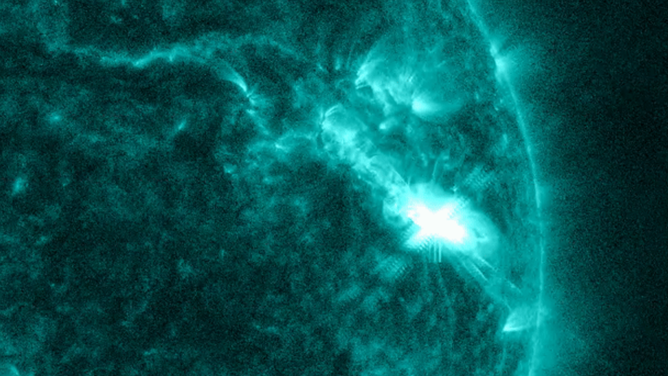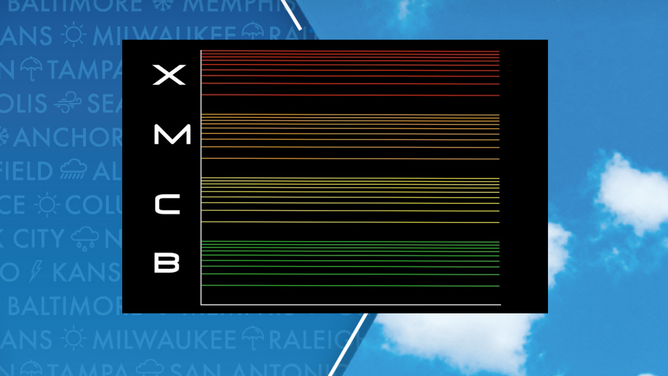Largest solar flare in 6 years leads to problems with radio communications with planes
Thursday’s solar flare is not only the largest of the current solar cycle but also the largest since Sept. 10, 2017, officials say.
Know Your FOX Weather: Northern Lights
FOX Weather meteorologist Stephen Morgan breaks down the Northern Lights and how you can see them.
NASA reports a massive solar flare has erupted on the Sun, releasing a large amount of radiation energy, and the entire event was captured on video by a spacecraft.
The space agency released images Thursday, which NOAA's Space Weather Prediction Center called the largest solar flare since Sept. 10, 2017.

NASA’s Solar Dynamics Observatory captured video of a solar flare.
(NASA)
The flare was reported as an X2.8, which is among the most intense events and sent a burst of radiation hurtling toward Earth.
Space experts classify flares according to strength, with the smallest being known as B-class, followed by C, M and finally, X-class.

Solar flare guide.
(NASA)
Within each category, numbers are assigned to events that help determine its scale. This means the 2.8 is on the low end of a strong event.
The strongest solar flare in recorded history is believed to have been an X45, which occurred in 2003, but most X-class events rank between 1 and 9.
SPWC said the most recent event was strong enough to cause some high-frequency radio blackouts on Earth.
Federal agencies described the event as "one of largest solar radio events ever recorded" and even said there was significant radio communication interference with aircraft.
Solar flares and other solar eruptions are known to impact communications equipment, electrical grids and even spacecraft.
No irregularities have thus far been reported on the International Space Station. A scheduled SpaceX undocking was delayed due to weather on Earth, not in space.
NOAA PREDICTS STRONGER PEAK OF SOLAR ACTIVITY IN 2024 THAN ORIGINALLY ANTICIPATED
Solar activity has been on an uptick associated with the peak of Solar Cycle 25, which is expected to happen in 2024. SWPC officials said Thursday's flare is also the largest flare detected this solar cycle.
The overall strength of the cycle is expected to be generally weaker than average but more significant than what was experienced during previous solar events.
CMEs also detected this week
A coronal mass ejection, which is larger than a solar flare and is often referred to as a CME, can lead to some of the most brilliant displays of the Northern Lights.
Forecasters said that two small CMEs have also been detected this week and should arrive to Earth by Friday and Saturday. Forecasts for the auroras generally are only released 24-48 hours ahead of time, and the latest NOAA forecast shows values staying in the low to moderate range.
